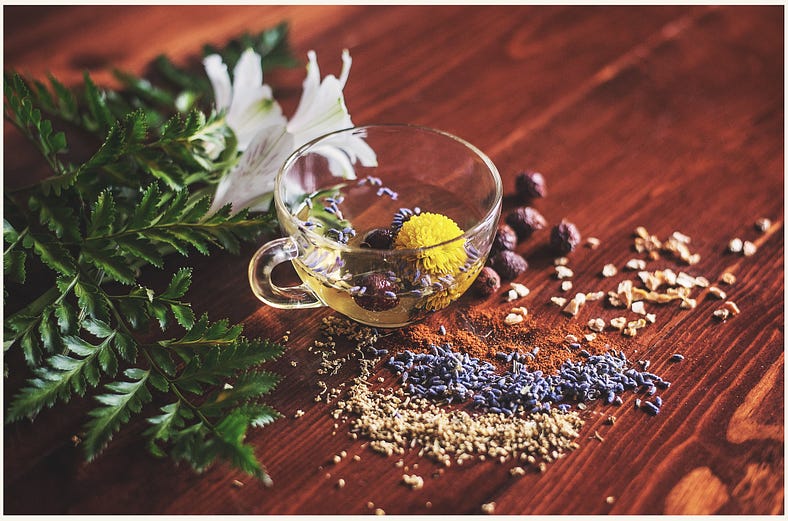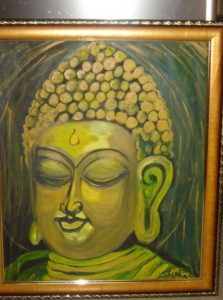Route To Great Health: Traditional Medicines and Health Deities
Shikha SaxenaJul 12, 2020 · 4 min read

Traditional Medicine and surgery in India has very long history which dates back to 600 BC to 200 AD even some evidences in stone age about 5ooo BC where even the art of drilling teeth and filling cavities were also known in Indus Valley. The Indus people used plant drugs, animal products and minerals in their medicine system.
Its earliest concepts are set in the sacred writings called the Vedas, especially in the passages/hymns of the Atharvaveda, which may possibly date back as the 2nd millennium BCE. The term “Ayurveda” made of two Sanskrit words ayur (life) and veda (science or knowledge). Ayurvedic medicine, practiced in India, is one of the oldest systems of medicine in the world. Many Ayurvedic practices have written records and texts and were handed down by word of mouth by disciples of ancients Vaidya (doctors).
The figurines of deities found in excavations indicate that the Indus valley people worshiped god and goddesses in human form as well. There were no less than 3000 gods in Vedic times. Main among them were Indra, Agni (the sacrificial fire), and Soma. Some gods of social order such as Mitra–Varuna, Aryaman, Bhaga and Amsa also were important.
Goddesses included Ushas (the dawn), Prithvi and Aditi (the mother of the Aditya gods or sometimes the cow). Rivers, as Ganges and Saraswati, were also considered goddesses. There were nature gods such as Surya (the Sun), Vayu (the wind), Prithivi (the earth).
The principal divinity was Indra — the God of War and thunder. Soma the ritual drink dedicated to Indra was a prominent deity. Agni was the God of fire, the guardian of the world and giver of eternal life. Surya the Sun God was also deeply venerated.
Brahma was the King of Gods. He was the creator or protector who was also given the name of Narayana Prajapati or Pursha. He was the father of all creatures. Prajapati, the creator, came to occupy the supreme position in later Vedic period.
Rudra, the god of animals, became important in later Vedic times and Vishnu came to be conceived as the preserver and protector of the people.
The two outstanding Rig Vedic gods, Indra and Agni, lost their former importance.
The Vedic period passed on smoothly to the Hindu period which flourished from 700 to 600BC. With some changes and modifications to the Vedic gods and goddesses, a completely new spirituality developed during the Hindu period. It created a real harmony between mental purification and spiritual solace.
Medicine Gods
Following gods were worshiped as God of Medicine in Vedic period and have many stories around them:
Dhanvantari
Lord Dhanvantari is the Hindu Doctor God of medicine. He is also believed to be the founder of Ayurveda, the ancient Indian science of herbal medicine.Dhanvantari’s origin dates back to the Puranas and more importantly to the legendary incident of Samudra Manthan. Bhagavata Purana state that Dhanvantari emerged from the Ocean of milk and appeared with the pot of Amrita (elixir for immortality) during the incident of Samudra Manthan (Churning of Sea). Dhanwantari is depicted as Vishnu with four hands, holding Shanka, Chakra Jalauka (leech) and a pot containing rejuvenating nectar called Amrita.
God Rudra
The Vedic God Rudra is the very first God of medicine. The Rudra sukta, i.e. chapter 16 of Shukla Yajurveda called Him the “Bhishak”, or the doctor. This word is used for the medical practitioner. The mantra states that Rudra is the first doctor of the Gods “Prathamo daivyo bhishak”. Rudra is also living in the waters and the herbal plants. Rigveda states that the rudras live in the waters, fire and the herbs. Elsewhere in the same, it is also stated that the herbs are calleds “Apsaras”, since they reside in waters. It is derived from the word”Aap” which means water, in vedic sanskrit. The word “Apsaras” means one who resides in water, and denotes herbs.
The Asvins (Also Spelled Ashvins or Aswins)
Ashwini Kumara’s are twin Vedic deities who are considered to be physicians or healers. Aswins are inseparable twin gods of medicine and healing. Ashwini Kumara’s are the sons of Lord Surya and Sangya. They are the earliest known physicians having the ability to perform organ transplant surgery. They are mentioned in the Vedic hymns and the Upanishads. The Rigvedic hymns describe them as lords of hundred powers, who constantly strive to do good to others, who can make the blind and lame see and walk, the injured recover quickly from their afflictions, and help men produce offspring or the cows yield more milk.
They can reduce the heat in the human body, cure the septic sores, store the germ of life in female creatures and perform even surgery.
Traveling in a chariot with three spokes, they come down to the earth thrice a day carrying with them heavenly medicines. The Asvins are considered brothers of Usha, the goddess of dawn and may actually represent twilight, when darkness and light appear intertwined on the horizon just before dawn as well as before dusk.
Traditional medicines and ancient Indian Ayurvedic treatment processes and procedures are believed to be passed through generations, from Hindu Deities and forms the basis of present day Traditional medicines. These treatments start with internal purification of soul, followed by satvik diet, herbal remedies, massage therapy, yoga asans and meditation.
Interconnection of Body, Mind and Soul is the concept behind Traditional Ayurvedic Medicines which helps in treatment of chronic conditions as of Diabetes, Skin probelms and joint pains of rheumatoid arthritis.
Weaving Stories around an Image
Get an email whenever Shikha Saxena publishes.
WRITTEN BY
Shikha Saxena
A Technical Writer, an artist and blogger by choice. Passionate about reading , writing and editing. http://www.shikhasaxena.com and https://www.dnabox.co/

Image Journal
Shelving memories for a longer safekeep

Share Your Thoughts